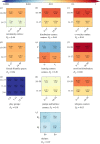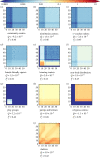A mixed-method approach to determining contact matrices in the Cox's Bazar refugee settlement
- PMID: 38126066
- PMCID: PMC10731328
- DOI: 10.1098/rsos.231066
A mixed-method approach to determining contact matrices in the Cox's Bazar refugee settlement
Abstract
Contact matrices are an important ingredient in age-structured epidemic models to inform the simulated spread of the disease between subgroups of the population. These matrices are generally derived using resource-intensive diary-based surveys and few exist in the Global South or tailored to vulnerable populations. In particular, no contact matrices exist for refugee settlements-locations under-served by epidemic models in general. In this paper, we present a novel, mixed-method approach for deriving contact matrices in populations, which combines a lightweight, rapidly deployable survey with an agent-based model of the population informed by census and behavioural data. We use this method to derive the first set of contact matrices for the Cox's Bazar refugee settlement in Bangladesh. To validate our approach, we apply it to the UK population and compare our derived matrices with well-known contact matrices collected using traditional methods. Our findings demonstrate that our mixed-method approach successfully addresses some of the challenges faced by traditional and agent-based approaches to deriving contact matrices. It also shows potential for implementation in resource-constrained environments. This work therefore contributes to a broader aim of developing new methods and mechanisms of data collection for modelling disease spread in refugee and internally displaced person (IDP) settlements and better serving these vulnerable communities.
Keywords: contact matrices; individual-based model; simulation.
© 2023 The Authors.
Conflict of interest statement
We declare we have no competing interests.
Figures





















References
-
- Altare C, Kahi V, Ngwa M, Goldsmith A, Hering H, Burton A, Spiegel P. 2019. Infectious disease epidemics in refugee camps: a retrospective analysis of UNHCR data (2009–2017). J. Glob. Health Rep. 3, e2019064. ( 10.29392/joghr.3.e2019064) - DOI
Grants and funding
LinkOut - more resources
Full Text Sources

